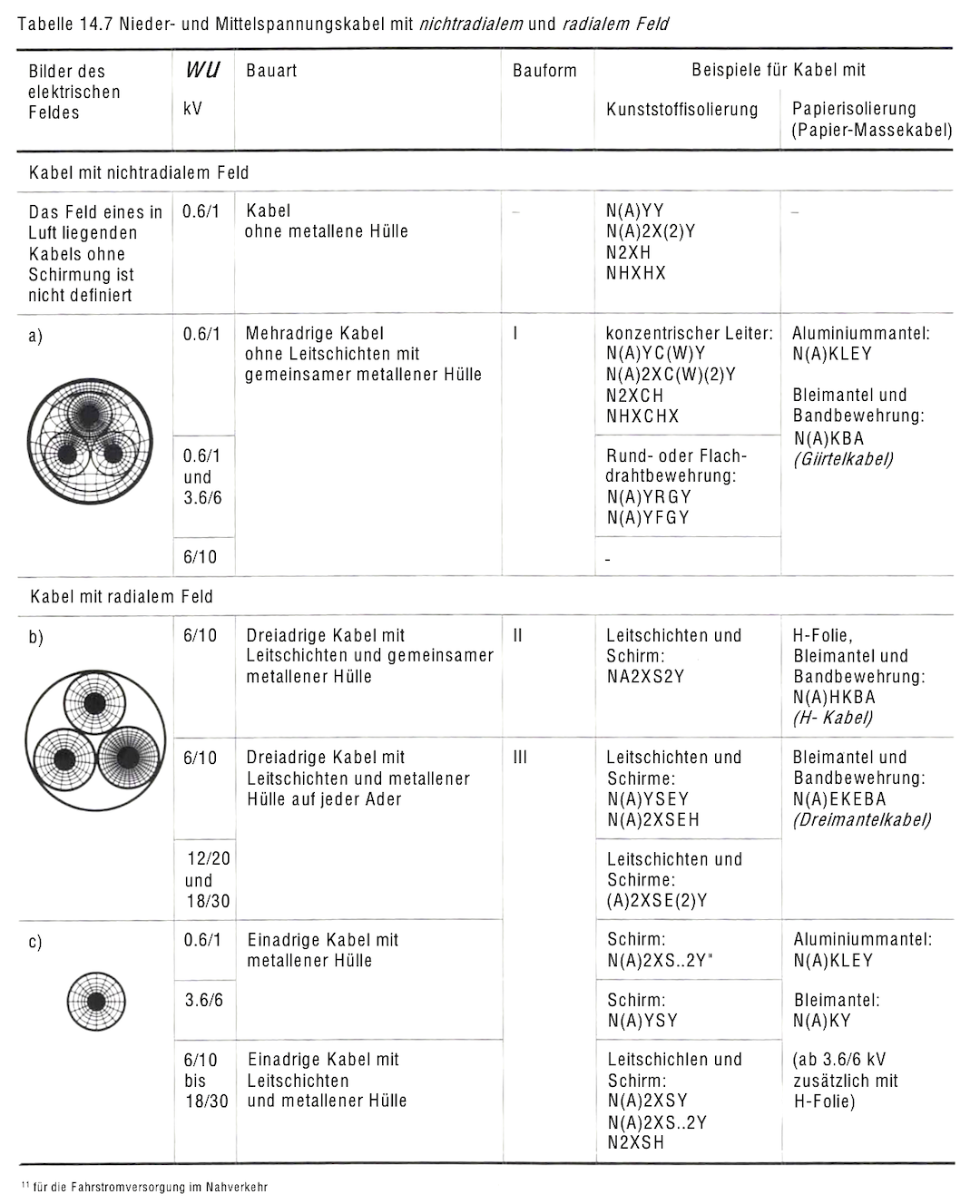The operating capacity is decisive for all considerations relating to the electrical properties of a cable. In the case of cables with a non-radial field and shielding, the operating capacitances cannot be precisely calculated due to the inhomogeneities in the interstices. If the cables are not shielded, the limitation of the electric field to the outside is indefinite. Capacitance per unit lengths, especially to earth, cannot be given because they depend to a large extent on the electrical properties of the environment.
If cables with sector-shaped conductors and single-wire shielding have relatively thin insulation in relation to the conductor dimensions, e.g. cables up to $U_n$ 10 kV, the diameter of a conductor with the same circumference can be used as an approximation.
In a three core cable where individual cores are twisted together (it is assumed that two-core cables are not twisted), the electrical capacitance of the cable is larger than the electrical capacitance of the individual cores. This is because the cores are longer due to the twisting. In datasheets often the capacitance per cable is given. If the electrical capacitance is not given by the manufacturer, the value must be calculated manually, and the lay length must be taken into account by the user, using the same formula as given in section 2.5 for the electrical resistance of conductors. The electrical capacitance of the cable can then be found as the electrical capacitance of an individual core multiplied by the lay length factor, refer to CIGRE TB 880 Guidance Point 20.
| $\frac{2\pi \epsilon_0 \epsilon_i}{\ln\left(\frac{r_{osc}}{r_{isc}}\right)}$ | single-core, multi-core with separate screen/sheaths |
| $\frac{2\pi \epsilon_0 \epsilon_i}{\ln\left(\frac{2c_c \left({r_{osc}}^2-{c_c}^2\right)}{r_{isc} \left({r_{osc}}^2+{c_c}^2\right)}\right)}$ | two-core belted cables (with common screen or no screen but common sheath or no screen/sheath) |
| $\frac{2\pi \epsilon_0 \epsilon_i}{\ln\left(\sqrt{\frac{3{c_c}^2 \left({r_{osc}}^2-{c_c}^2\right)^3}{{r_{isc}}^2 \left({r_{osc}}^6-{c_c}^6\right)}}\right)}$ | three-core belted cables (with common screen or no screen but common sheath or no screen/sheath) |
| $F_{lay,3c} C_b$ | CIGRE TB 880 Guidance Point 20, three-core cables with twisted cores |
| $\frac{1}{2\pi \epsilon_0} \frac{{10}^{-9}}{18} C_b$ | CIGRE TB 880 Guidance Point 20, approximation |
| $\frac{2\pi \epsilon_0 \epsilon_i}{\ln\left(\frac{D_{comp}}{D_c}\right)}$ | PAC/GIL |

Kabel und Leitungen für Starkstrom, Kap. 25 Kapazität, L. Heinhold (Siemens/Pirelli 1999)